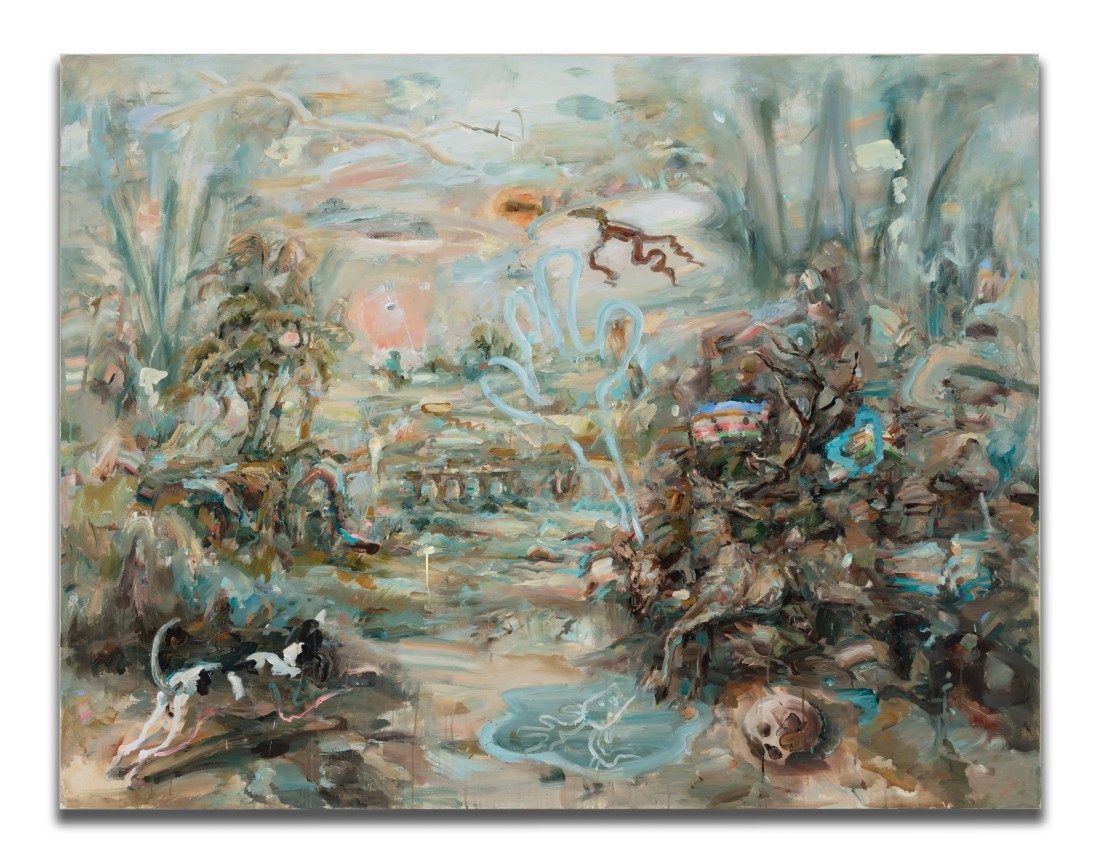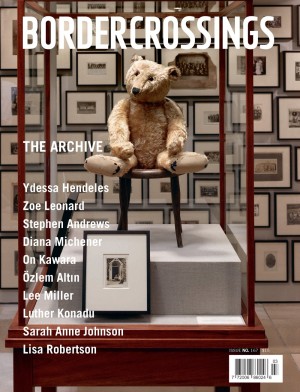Carol Wainio
While they are vastly different mediums, like writing, painting gives a visual and material presence to thought. Carol Wainio describes her work as “a discursive, visceral wondering.” And wondering and thinking go hand in hand: Wainio thinks in pictures as she wonders about “history, representation, narrative, experience, and the current climate (in all its meanings).” Her methodology— fragmentation, quotation, dialectical image, allegory—recalls Walter Benjamin, whose ideas she filters through the mind and sensibility of a painter. Like the German philosopher and literary critic, Wainio believes that ideas can be expressed sensuously.
This inimitable painter works in series, having developed a train of thought and imagery across a span of years. After working with fairy tales from 2000 to now, she has grown interested in the animal fable. Traced back to the legendary Greek slave Aesop in the 6th century BC, and based on even more ancient oral traditions, animal fables are short tales in which animals speak and act like humans. Unlike the magical fictions of the fairy tale, which cling to myth, the more downtoearth fable dispenses life lessons about the downside of such things as hubris, deceit and narcissism or the rewards of sticktoitness and moral rectitude.
Both fairy tale and fable were represented visually in Wainio’s exhibition “Vers L’Incertitude” at TrépanierBaer in Calgary. The show contained paintings from three series. Paintings of hands casting shadow silhouettes of fable animals evoked the storyteller, the ancient oral traditions of storytelling and the mechanisms of illusionmaking. Two paintings of the eponymous protagonist of “Le Petit Poucet,” one of eight fairy tales published by Charles Perrault in 1697, continued a series inspired by this fairy tale about children abandoned in the forest by parents who couldn’t support them. In the painting Vers L’Incertitude, 2021, the boy, aka Little Thumb, stands in the bow of a foldedpaper boat, peering through an opening in the thick, atmospheric turbulence that surrounds him. He is detached from time and place and looks out as if trying to sight what’s ahead in the uncertain future.
In the third and most recent series, Wainio sets characters from animal fables into landscapes that quote Dutch landscape and genre painting of the 17th century, the period in which Jean de La Fontaine published his Aesopbased Fables, 1668, and the form reached its peak in Western culture. The animal fable itself is an allegory of human behaviour, and the historical background of Wainio’s paintings lays the ground for an allegory of Then and Now. The rise of urbanization and the merchant class, the emergence of capitalism and the beginnings of the art market, all of which occurred Then, are the backstory of our Now. Painting, especially the popular landscape genre, was a commodity that offered escapism into God’s nature and the simple, honest ways of idealized peasant life. The interactions of the fable characters show that human nature is not much changed, though much else has. This could account for the fable’s recurring significance.
Wainio’s fable paintings might be her most conceptually complex work. The paintings portray a world in the process of dissolving in which things that seem barely affixed to their grounds are brimming with implied movement. In her contemporary versions, the general source of 17th-century Dutch painting is recognizable in the teeming landscape compositions and their features, such as trees and cottages, stone bridges and sandy roads. She works here with thin, loose brush strokes, shifting focus, using a palette of blues, pinks, greyed whites and raw umber. The muted otherworldly palette produces a surreal dreamlike space, and into these landscapes she inserts images from other genres and periods—from high art to the vernacular and popular arts.

Carol Wainio, Tabula Rosa, 2022, acrylic on canvas, 50 × 68 inches. Photo courtesy TrépanierBaer Gallery, Calgary.

The Deer and the Pool, 2022, acrylic on canvas, 60 × 78 inches. Photo courtesy TrépanierBaer Gallery.
A landscape setting will have been composed of many different “bits” taken, and possibly altered, from other similar scenes. The quotations are “cobbled together,” and the disparate fragments from other sources create constellations of images that, in the spirit of montage, retain the character of their original sources. The innocent sheep who falls prey to a lying wolf in Tabula Rosa, 2022, was taken from Rosa Bonheur’s bucolic Sheep and a Lamb, 1886. The stag in The Deer and the Pool, 2022, who is set upon by hunters as he admires his antlers reflected in a pool, appeared in a popular Épinal print. The only painting from which Wainio has taken a full quotation is Fable of the Dog and the Dam, 1638–1640, by Paul de Vos. It’s at the centre of her Dog and Shadow, 2021, set off by a thin pink line.
Disrupting any semblance of realism even further, strange gestures in the backgrounds of Wainio’s paintings, which recall descending tornadoes or looping vapour trails, inject aberrant energies into the scenes. Caesura-like breaks occur between image patches, images are overlaid, and in the remarkable Excavation, 2021, the composition is a cutaway view that shows above and below ground, with the upper ground literally shifting and pouring over the edge in a flow of sand, rock and bone that cascades down the picture plane. In this Tortoise and Hare painting, the tortoise is a mound of debris with a phantom neck and head; the hare lies below, asleep or dead in its warren amid rubble and the ruins of Roman mosaic floors.
Fable animals have been used over centuries as the protagonists of political satire. Wainio works more subtly through indirection to get at the social, political and ecological ills that are upon us in the 21st. The landscape setting is like a palimpsest, a visual historical text altered by partial erasure and the addition of new content, both seen and felt, that imbues the paintings with a contemporary consciousness. This contemporary awareness is what turns them into dialectical images. Rather than a narrative outcome, Excavation suggests a slow process of layering— of the past, the present, potentially, the future—in which the gullible, mendacious, innocent, resourceful, vain, rebellious animal characters with their all too human traits are caught. In the slow process of reading Wainio’s paintings, she gives us much to think about. The physical world she depicts is changing, and not for the best, and a ruin-strewn empire that goes without naming is dying. This seems a premonitory dream. Though nothing is spelled out, given the turmoil of current events and the lessons of history, the fables of “L’Incertitude” raised possibilities we are at peril to ignore. ❚
“Carol Wainio: Vers L’Incertitude” was exhibited at TrépanierBaer, Calgary, from April 22, 2022, to July 2, 2022.
Nancy Tousley, recipient of the Governor General’s Award in Visual and Media Arts, is an art critic, writer and independent curator based in Calgary.

